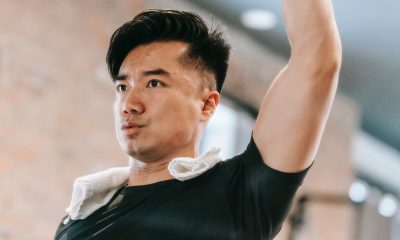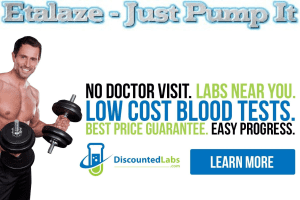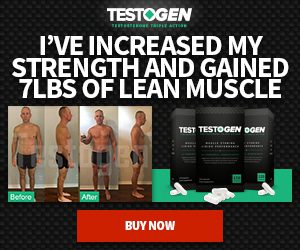Gain Weight
Post-Summer Lean Bulking Guide 2019

What Do You Understand About Lean Bulking Guide?
The late spring may be nearing to its end. Also, in this manner, you consider changing to a building outlook. You could proceed with the trip of shred-dom. You could deny yourself for each unique festival. However, it will likewise help if you will change your objectives. It will be a smart thought to take part in a lean bulking guide.
You should remember that there are two types of bulkers. One is dirty bulk and lean bulk. The contrast between the two is the thoughtfulness regarding the detail. The understanding of building fit and correct muscles that require some serious energy. It isn't tied in with doing all these in only weeks, however, more about the months.
Then again, you may as of now have experienced such a filthy bulker previously. They are the ones who invest a large portion of their energy, eating burgers, frozen yogurts, and pizzas. They never demonstrate their care in regards to their total calorie tallies or nourishing actualities. It is because that is the season of building season. If you have shown no responsibility, you will wind up aggregating fat severe mass.
Few Nutrition Secrets For Gaining Lean bulking guide Muscle Fast
Generally, when it came to putting on weight or "bulking" trying to include muscle, starches were the point of convergence in crossing over the caloric hole that remained between the jock and his weight pick up the objective. This training, for the most part, conveys results for hard gainers or youth adults.
The reason is that sugars are protein saving. They cause the body to discharge insulin, which pulls accessible supplements in the blood. Also, it puts them to utilize amino acids for muscle recuperation or capacity, which abundance calories put away as fat. For somebody with quick digestion, taking in complex starches 6 times each day will help avoid muscle squandering and will advance stockpiling of macronutrients as opposed to using.
How Many Carbs Should You Eat?
The issue with this is a large number of us either increase fat effortlessly due to hereditary qualities, or we're routing past our high schooler years and having quick digestion is a relic of times gone by. What it comes down to is that you can't pick up muscle without no less than a direct surplus in calories over what your body consumes in multi-day, including exercise. Be that as it may, overabundance carbohydrates may not be the correct approach for increasing the size and remaining lean.
Read More: Best Nutrition Plan during Cutting and Bulking Steroid Cycle
- Presently before you take all your pasta, bread and rice and beans and discard them, tune in up.
- Carbohydrates are the primary wellspring of fuel for our bodies if you don't devour enough, your body will separate muscle for amino acids; it can change over into glucose.
- Glycogen is the type of carbohydrates in the body, and under ordinary conditions, the body can store around 400 grams at any given moment.
How Do You Make Use Of The Glycaemic Index?
- Bring down GI nourishments usually are things like whole-wheat bread, oats, or whatever else stringy.
- High GI nourishments are typically those containing high measures of sugar such as standard pop, organic product squeezes, and sans fat yogurt, anything high in sugar.
- There is no proof that sugar will make you fat, and the worry is about aggregate searches for the day and not glycaemic record but rather if you are attempting to lose fat, the spike in insulin will forestall weight reduction, and the surge of sugar could make you crash down.
Click Here to Check Price of Glycaemic Index
Is There Any Good Reason Why We Shouldn't Avoid Fats?
Most eminent of the impacts of solid fats is decreasing irritation, expanding heart wellbeing, and bringing down blood cholesterol. The fats you ought to search for are poly and mono-unsaturated, they are never firm at room temperature.
A simple method to up your dietary fats is to get some nutty spread and eat your chicken bosoms/turkey sandwich with oil and vinegar for enhancing.
- Supplementing with Omega 3 or eating fish no less than two times every week is exceptionally prescribed too.
- Omega 3 unsaturated fats help to hold circulatory strain under wraps as muscle heads put there pulse through the rooftop each time.
- Diminish triglyceride levels, which can help in the reduction of atherosclerotic plaque (decreasing plaque that causes blood clumps) and lessening your odds of coronary illness when all is said in done.
Examples of a Moderate-Fat Diet:
- A moderate fat eating routine that has the most demonstrated long-term achievement is the Mediterranean eating routine.
- A Harvard contemplate was finished with 101 people and what was found with the direct fat Mediterranean eating routine which 35% calories from fat, for the most part, monounsaturated from the nutty spread, blended nuts, canola, olive and nut oils that expanded consistency.
- Regardless of the promotion for healthy fats, direct measures of saturated fat ought not to be dreaded.
- Try not to be frightened of the saturated fat in your oils and nutty spread, and keep the immersed fats from your red meat under control.
- Have your white meat chicken and turkey all the time, switch it up with angle two times per week and steak on more than one occasion per week, so you don't get bored.
So How Much Should We Eat?
So in case you're a hard gainer, and you've taken a stab at eating like there's no tomorrow however without any result; you can undoubtedly expand your calorie allow by including more fats into your eating routine recall, fat is 9 calories for every gram instead of the 4 calories for each gram of protein or carbs.
- For one thing, your objective for weight increase as indicated by them ought to be 1 pound each one to two weeks for a middle of the road lifter and one pound each one to two months for a propeller.
- Through my encounters with lifting weights, putting on weight any faster while characteristic is typically connected with incredible hereditary qualities, fat pick up, or water maintenance or muscle growth.
Must Read: Best Nutrition Plan during a Cutting and a Bulking Steroid Cycle
Begin Right
- One of the most imperative parts of a spotless mass is a lean beginning stage. Since you're unavoidably going to see in any event some fat pick up. You should be sufficiently lean from the get-go to have some squirm room. In case you're not effectively happy with removing your shirt openly, you shouldn't attempt put on weight!
- Furthermore, in the event that you begin fat, you won't mass well before you have to change gears and eating regimen.
- An abnormal state of muscle versus fat may really frustrate solid pick up and prompt further fat increases!
- Expansive fat stores send hormonal signs that upset your body's supplement parceling, making it more probable that any given caloric load will be put away as fat.
- When you're fit, in any case, you have revved-up digestion and a body that needs to assemble muscle, not store fat.
Must Read: Incorporating The Correct Diet Plan That Complements Your Bodybuilding Cycle!
The Most Effective Method to Progress Through a Bulking Phase:
Presently you know how to devour your every day calorie needs. To begin building, including 10 percent more calories. In the case over, 10 percent of 2,852 calories is 285 calories. They would add 285 calories to their past stipend, now devouring 3,137 calories for each day.
This first change should come as extra carbohydrate. To decide the measure of sugar to add to your day, isolate the new extra calories by four to get grams of starch. Endeavor to disseminate it equally over your pre-exercise, intra-exercise, and post-exercise suppers.
Must Read: How Many Calories A Day To Eat To Build Muscle?
Progress Carefully From Lean Bulking Guide To Maintenance:
When you complete your building stage, you have to progress to a post-building support stage. This stage portrays by a slight diminishment in calories, for the most part from carbs. This lessening fills in as a "reset" to enable your body to begin enhancing its insulin affectability. Also, become acclimated to conveying more muscle than previously.
If you attempt to progress from a building stage instantly into a consuming fewer calories stage. You essentially improve the probability that you'll lose the bulk you just worked so difficult to put on. The post-building support stage should last 4 a month and a half. A while later, you're prepared to progress into another building stage or a consuming fewer calories stage.
Conclusion:
Permit numbers are your guide. Expect to pick up 2-3 pounds for each month; much else is probably going to be only fat. More vital than the weight pick up, however, is your main thing in the gym. Apart from that, Strong additions ought to run as an inseparable unit with expanded quality. In case you're putting on body weight yet not hitting PRs, you're simply getting fatter!
If you begin this lean bulking guide and spend no less than a year gradually increasing lean mass. You'll be flabbergasted with your outcomes! Weight gain and loss are significantly more perplexing than "calories in, calories out". Junk sustenance has hormonal effects on your body and won't enable you to reach accomplish ideal outcomes from your hard endeavors.
Bodybuilding
Demystifying Hypertrophy Training

Hypertrophy training, often referred to as bodybuilding training, is a method focused on increasing muscle size and definition through targeted exercises and specific training techniques. Professional bodybuilders have mastered the art of hypertrophy training to sculpt their bodies into peak physical condition.
At its core, hypertrophy training involves lifting weights at a moderate to high intensity for a moderate number of repetitions. The goal is to create micro-tears in the muscle fibers, which then repair and grow stronger and larger during the recovery process. This leads to muscle hypertrophy or an increase in muscle size.
Understanding the basics of hypertrophy training involves knowing how to manipulate variables such as sets, reps, rest periods, tempo, and intensity. By adjusting these factors, individuals can tailor their workouts to target specific muscle groups and achieve optimal results.
Proper nutrition and adequate rest are also crucial components of hypertrophy training as muscles need sufficient fuel and time to recover and grow. Consistency in training and adherence to a well-rounded program are key pillars in unlocking the full potential of hypertrophy training.
Must Read: The Ultimate Chain and Plate Curls for Pumping Biceps
By demystifying hypertrophy training and embracing its principles with dedication and focus, individuals can effectively work towards achieving their desired physique goals while enhancing overall strength and endurance.
Principles of Hypertrophy Training
When you engage in strength training, you put strain on your muscles. This stress prompts the body to repair and adapt, resulting in an increase in muscle fibers. Here are the basics about this form of training you need to familiarise with:
Training Frequency
For new bodybuilders, a frequency of 3-4 times per week is often recommended to allow for sufficient recovery between sessions. Professional bodybuilders may train more frequently, sometimes up to 5-6 times per week, as their bodies have adapted to higher training volumes over time.
Intensity and Volume: New bodybuilders typically start with moderate intensity (around 65-75% of their one-rep max) and moderate volume (3-4 sets of 8-12 reps per exercise). Professional bodybuilders often incorporate higher intensities (75-85% of one-rep max) and higher volumes (4-6 sets of 8-15 reps per exercise) to continue stimulating muscle growth.
Exercise Selection
Both new and professional bodybuilders focus on compound exercises (e.g., squats, deadlifts, bench press) that target multiple muscle groups simultaneously to maximize muscle recruitment and overall hypertrophy. However, professionals may incorporate more isolation exercises to target specific muscles or muscle groups that need extra attention.
Progressive Overload
Both groups prioritize progressive overload, which involves gradually increasing the weight, reps, or sets over time to continue challenging the muscles and promoting growth. This can be achieved through methods such as increasing resistance, shortening rest periods, or varying exercise techniques.
Nutrition
Both new and professional bodybuilders emphasize the importance of nutrition for muscle growth and recovery. This includes consuming an adequate amount of protein to support muscle repair and synthesis, as well as sufficient carbohydrates and fats for energy and overall health.
Rest and Recovery
Adequate rest and recovery are crucial for hypertrophy training. Both new and professional bodybuilders prioritize getting enough sleep (7-9 hours per night) and incorporating rest days into their training schedules to allow muscles to repair and grow.
Supplementation
While both new and professional bodybuilders may use supplements to support their training and nutrition goals, professionals may have more sophisticated supplementation protocols tailored to their specific needs and goals. We recommend supplements such as protein powders, creatine, branched-chain amino acids (BCAAs), and pre-workout formulas.
Monitoring and Adjustments
Professional bodybuilders often closely monitor their progress through measurements such as body weight, body composition, and strength levels. Based on these assessments, they make adjustments to their training, nutrition, and supplementation protocols to continually progress towards their goals.
Arnold Schwarzenegger's Hypertrophy Workout Routine
Arnold Schwarzenegger's volume workout is a legendary approach to hypertrophy training that he popularized during his bodybuilding career. Here's an explanation of how his workout relates to hypertrophy training:
High Volume
Schwarzenegger's training program was characterized by high volume, involving a large number of sets and reps per workout. This high volume stimulates muscle growth by subjecting the muscles to prolonged tension and metabolic stress, both of which are key factors in hypertrophy.
Multiple Sets and Reps
Each exercise in Schwarzenegger's workout typically included multiple sets (often 4-5 sets) with a moderate to high number of reps (8-12 reps). This approach allows for ample time under tension, which is essential for stimulating muscle growth and hypertrophy.
Compound and Isolation Exercises
Schwarzenegger's workout included a combination of compound exercises (e.g., squats, bench press, deadlifts) and isolation exercises (e.g., bicep curls, tricep extensions) to target various muscle groups from different angles. Compound exercises help to maximize muscle recruitment, while isolation exercises allow for targeted muscle stimulation and hypertrophy.
Frequency
Schwarzenegger typically trained each muscle group 2-3 times per week, allowing for sufficient frequency to stimulate muscle growth while also providing adequate recovery time between sessions. This frequency helps to maximize hypertrophy by consistently exposing the muscles to growth-inducing stimuli.
Intensity Techniques
Schwarzenegger often incorporated intensity techniques such as drop sets, supersets, and forced reps into his workouts to further increase the intensity and stimulate muscle growth. These techniques help to push the muscles beyond their normal limits, triggering adaptations that lead to hypertrophy.
Periodization
Schwarzenegger employed periodization principles in his training, alternating between phases of higher volume and lower volume to prevent plateaus and continue making progress. This periodization strategy helps to optimize muscle growth by varying training stimuli over time.
Mind-Muscle Connection
Schwarzenegger emphasized the importance of the mind-muscle connection, focusing on contracting and feeling the target muscles working during each repetition. This approach helps to maximize muscle fiber recruitment and engagement, enhancing the effectiveness of each exercise for hypertrophy.
Nutrition and Recovery
In addition to his training program, Schwarzenegger paid close attention to his nutrition and recovery strategies to support muscle growth and hypertrophy. Adequate protein intake, proper hydration, and sufficient rest are essential components of any hypertrophy-focused training program.
Overall, Schwarzenegger's volume workout is a comprehensive approach to hypertrophy training that incorporates high volume, frequency, intensity techniques, and periodization to maximize muscle growth and achieve an impressive physique.
Also Read: Why Trenbolone Remains A Beast In The Market
10 Groups of Athletes That Can Benefit from Hypertrophy Workouts
We have prepared for you 10 groups of athletes that should consider hypertrophy training
1. Combat Sports Athletes
Martial artists, boxers, and other combat sports athletes can enhance their power and endurance through hypertrophy training.
2. Track and Field Athletes
Sprinters, jumpers, and throwers can improve their explosive strength by including hypertrophy training in their regimen.
3. Football/Soccer Players
Both American football players and soccer players can benefit from hypertrophy training to increase muscle mass and strength.
4. Gymnasts
Building lean muscle mass through hypertrophy training can help gymnasts improve their strength-to-weight ratio for better performance.
5. Swimmers
Swimmers can enhance their power in the water by incorporating hypertrophy exercises to strengthen key muscle groups.
6. Cyclists
While endurance is crucial for cyclists, adding hypertrophy training can boost leg strength and overall performance on the bike.
7. Basketball Players
Building muscle through hypertrophy training can improve basketball players' agility, jumping ability, and overall athleticism on the court.
8. CrossFit Athletes
CrossFit enthusiasts looking to excel in competitions can benefit from hypertrophy training to increase overall strength and muscular endurance.
9. Triathletes
Incorporating hypertrophy exercises into triathletes' routines helps prevent injuries by strengthening muscles that support joints during long-distance races.
10. Powerlifters
While powerlifting focuses on maximal strength lifts, including some hypertrophy work can aid in building a solid muscular foundation for lifting heavy weights more efficiently.
By tailoring a specific hypertrophy program to suit each group's athletic needs and goals, these athletes have the opportunity to optimize their performance levels while reducing the risk of injury associated with repetitive movements in sports-specific activities.
Final Thoughts
By understanding the underlying principles of progressive overload, volume, intensity, and frequency, individuals can tailor their training programs to effectively stimulate muscle growth. Whether you're a novice or a seasoned athlete, hypertrophy training offers a structured framework for optimizing muscle hypertrophy and sculpting a physique that reflects dedication, consistency, and strategic planning.
Embracing the science behind hypertrophy training empowers you as an individual to surpass limitations, break plateaus, and unlock their full potential in pursuit of their fitness aspirations. With proper guidance, commitment, and perseverance, anyone can harness the transformative power of hypertrophy training to sculpt a stronger, more resilient, and aesthetically pleasing physique.
Related Article: Post Cycle Therapy Vs. B&C: Which is Best for You?
Bodybuilding
Calorie Dumping: A Bodybuilder’s Guide

"Calorie dumping" in bodybuilding refers to a strategy where an individual consumes a large number of calories in a single meal, often following a period of low-calorie intake.
This practice is believed to support muscle growth by providing a surplus of energy and nutrients.
The idea is that after a period of restricted calorie intake, the body becomes more efficient at utilizing nutrients, making it more receptive to absorbing and utilizing the surplus calories in a short period.
However, this approach may not suit everyone and should be approached cautiously as it can lead to discomfort and potential digestive issues.
Calorie dumping, also known as refeeding or cycling calories, is sometimes preferred by bodybuilders to help prevent metabolic adaptation and aid in breaking through plateaus.
By occasionally consuming higher calorie levels, they aim to boost metabolism, replenish glycogen stores, and maintain hormone balance for better muscle growth and fat loss in the long term.
Bodybuilders focus on controlled nutrition plans to optimize muscle growth and minimize fat gain. However, occasionally, you might increase the calorie intake temporarily before an intense workout or competition to boost energy levels, but this isn't considered calorie dumping in the traditional sense.
ALSO READ: Your Guide to Become A Successful Personal Trainer
Long-term and Short-term Benefits of Calorie Dumping
Short-term benefits include replenishing glycogen stores, boosting metabolism, and providing mental relief from a strict diet.
Also known as a "refeed" or "cheat day," bodybuilders do calorie dumping for several long-term reasons:
Best Foods for Calorie Dumping
Beginners
Tren Cycle for Beginners

Bodybuilders must have a clear approach to the tren cycle for beginners. Trenbolone is a potent steroid that should be cautiously and properly researched.
For beginners, starting with a lower dosage and gradually increasing it over time is recommended. This allows the body to adjust to the effects of trenbolone and helps minimize the risk of potential side effects.
Start With A Plan
It is also important to have a well-structured cycle plan in place. This includes determining the cycle duration, dosages, and frequency of administration. Consulting with a knowledgeable healthcare professional or experienced trainer can provide valuable guidance in creating an effective cycle plan.
Additionally, proper nutrition and training protocols are essential during a trenbolone cycle. A balanced diet of protein, carbohydrates, and healthy fats will support muscle growth and recovery. Combined with an appropriate workout routine tailored to individual goals, this can maximize the benefits of the trenbolone cycle. Remember that safety should always be a priority when using any steroid.
Educating oneself about potential side effects, risks, and proper usage guidelines is crucial before embarking on a trenbolone cycle or any other steroid regimen. You're right! Proper nutrition and training protocols are crucial when using trenbolone or other steroid. A balanced diet is important to provide the necessary nutrients for muscle growth and recovery. Including sources of protein, carbohydrates, and healthy fats can support your body's needs during the cycle.
Additional Reading:: Supplemental Breast Milk for Bodybuilders: The Secret Behind It
Tailor Your Training Routine To Individual Goals
In terms of training, having an appropriate workout routine tailored to your individual goals is key. This can help optimize the benefits of the trenbolone cycle by ensuring that you're targeting specific muscle groups and incorporating exercises that promote strength and hypertrophy.
Dig Out More Information
However, it's important to prioritize safety when using any steroid. Before starting a trenbolone cycle or any other steroid regimen, educating yourself about potential side effects, risks, and proper usage guidelines is essential. This will help you make informed decisions regarding dosage, duration of use, and post-cycle therapy (PCT) to minimize potential risks.
Furthermore, consulting with a healthcare professional or qualified fitness expert with steroid experience can provide valuable guidance throughout your journey. They can monitor your progress, address any concerns or questions you may have. Always remember that responsible use of steroids involves thorough research, consideration of potential risks/benefits ratio, and being mindful of your overall health and well-being.
The Frequency of Tren Cycle for Beginners
When it comes to cycling Trenbolone, there are several factors to consider. The frequency of the Tren cycle for beginners can vary depending on individual goals, experience level, and tolerance to the compound. Typically, Trenbolone cycles range from 8 to 12 weeks in length. However, some advanced users may extend their cycles up to 16 weeks.
It's important to note that Trenbolone is known for its strong side effects, including potential cardiovascular strain, suppression of natural testosterone production, and liver toxicity. Therefore, using this steroid responsibly and following proper cycling protocols is crucial.
Many experienced users recommend starting with a lower dosage during the first cycle to assess how your body responds to Trenbolone. Incorporating post-cycle therapy (PCT) after completing a Trenbolone cycle is also advisable to help restore hormonal balance and minimize potential side effects.
Ultimately, beginners' frequency of the tren cycle should be determined based on individual goals, understanding of the compound's risks and benefits, and consultation with a knowledgeable healthcare professional or experienced steroid user.
Tren Cycle for Beginners Steps
When using trenbolone (tren) for beginners, it is important to understand the step-by-step procedure clearly. Tren is a powerful anabolic steroid that should be cautiously approached, especially for those new to using performance-enhancing substances.
Before starting a tren cycle, it is essential to consult with a healthcare professional or an experienced fitness expert who can provide guidance and monitor your progress throughout the cycle. They can help determine if you are ready for this level of supplementation and ensure your safety.
The step-by-step procedure for a tren cycle typically involves the following:
1. Research and Education: Thoroughly research tren and its potential benefits, risks, and side effects. Understand how it interacts with your body and what precautions must be taken.
2. Establish Goals: Clearly define your goals for using tren, whether it's gaining muscle mass, increasing strength, or improving athletic performance. This will help guide your dosage and duration of the cycle.
3. Dosage Determination: Start with a low dosage to assess how your body reacts to tren. Beginners start with around 50-100mg per week, split into several smaller doses.
4. Cycle Duration: A typical beginner's tren cycle lasts 8-12 weeks. It's important not to exceed this timeframe as prolonged use can increase the risk of side effects.
5. Supportive Supplements: Consider incorporating supplements such as liver support agents or testosterone replacement therapy (TRT) during your cycle to mitigate potential adverse effects on liver function or natural testosterone production.
6. Monitoring Progress: Regularly monitor your progress during the cycle through objective measures such as body composition analysis, strength gains, and overall well-being.
7. Post-Cycle Therapy (PCT): After completing the Tren cycle, implement an appropriate post-cycle therapy protocol to help restore natural hormone production and minimize any potential side effects associated with discontinuing Tren use.
Where to Source Your Tren
When purchasing trenbolone, it is important to prioritize safety and legality. Trenbolone is a controlled substance in many countries, and its sale without a prescription is prohibited. Therefore, being cautious and ensuring you purchase from a reputable source is crucial.
One of the most reliable options for buying trenbolone is through licensed pharmacies with proper prescriptions, such as Etalaze.biz. These pharmacies adhere to strict regulations and quality control measures, ensuring you receive genuine products.
However, it's important to note that using trenbolone for non-medical purposes, such as bodybuilding or performance enhancement, may not be legal in some countries. In such cases, attempting to purchase trenbolone from underground or illicit sources can pose serious risks to your health and legal consequences.
It is always recommended to consult with a healthcare professional or an authorized medical practitioner who can guide you on the appropriate usage and legal avenues for obtaining trenbolone based on your specific circumstances.
Tren Cycle for Beginners Take Away
Beginner bodybuilders need to understand the approved dosage guidelines when using trenbolone, a powerful anabolic steroid. Trenbolone is known for its potency and effectiveness in promoting muscle growth and strength gains. However, it is crucial to cautiously approach Tren Cycle for Beginners due to its strong nature.
For beginners, starting with a lower dosage of trenbolone is generally recommended to assess their tolerance and response to the compound. The approved dosage for beginner bodybuilders typically ranges from 50mg to 100mg per week. This conservative approach allows individuals to gradually introduce trenbolone into their system while minimizing the risk of potential side effects.
It is important to note that every individual may respond differently to trenbolone, and factors such as age, weight, fitness level, and overall health should be considered when determining the appropriate dosage. It is always advisable for beginners to consult with a knowledgeable healthcare professional or experienced coach who can provide personalized guidance based on their specific circumstances.
Additionally, regardless of experience level, it is crucial for all users of trenbolone or any other anabolic steroid to prioritize proper cycle support and post-cycle therapy (PCT) protocols. These measures help mitigate potential side effects and ensure a safer and more effective experience with trenbolone.
In conclusion, when using trenbolone as a beginner bodybuilder, adhering to approved dosage guidelines ranging from 50mg-100mg per week is essential. Consulting with healthcare professionals or experienced coaches can provide valuable insights tailored to individual needs. Prioritizing cycle support and PCT protocols further contributes to optimizing safety and effectiveness during the usage of this potent anabolic steroid.
-

 Steroids2 years ago
Steroids2 years agoShavers and Other Body Grooming Equipment for Bodybuilders In 2023
-

 Steroids2 years ago
Steroids2 years agoChatGPT and Other Avenues to Find Great Bodybuilding Coaches
-

 Steroids2 years ago
Steroids2 years agoBest Oil Recommendations Before Competition for Subtle Shimmer
-

 Steroids2 years ago
Steroids2 years agoPowerlifting Vs Power Building: Find Out the Big Difference and When to Shift Between the Two
-

 Nutrition2 years ago
Nutrition2 years agoEverything Nutritional Food: What’s Too Much Or Too Little
-

 Bodybuilding Products1 year ago
Bodybuilding Products1 year agoTelmisartan In Bodybuilding: An Expert’s Advice
-

 Bodybuilding8 months ago
Bodybuilding8 months agoPrimal Movements: Our Ultimate Guide for Maximum Results
-

 Bodybuilding1 year ago
Bodybuilding1 year agoChia Seeds in A Bodybuilder’s Diet: An Expert’s Advice
-

 Anabolic Steroids10 months ago
Anabolic Steroids10 months agoJoint Stiffness: How to Manage It While on AAS
-

 Anabolic Steroids1 year ago
Anabolic Steroids1 year agoLegality of Anabolic Steroids In Latin America
-

 Steroids1 year ago
Steroids1 year agoAnadrol Cycle: Benefits, Doses, Alternatives, etc.
-

 Beginners2 years ago
Beginners2 years agoTren Cycle for Beginners
-

 Bodybuilding9 months ago
Bodybuilding9 months agoHow Effective is Bone Broth for Recovery?
-

 Steroids10 months ago
Steroids10 months agoOmnitope (Oxytocin)
-

 Bodybuilding1 year ago
Bodybuilding1 year agoHow Much Is Too Much Cardio? Understanding Heart Rate Zones
-

 Bodybuilding1 year ago
Bodybuilding1 year agoList of FDA-Approved Peptides
-

 Steroids9 months ago
Steroids9 months agoSleeping Positions for Effective Muscle Recovery
-

 Bodybuilding2 years ago
Bodybuilding2 years agoCompetition Prep Cycle for Pro Bodybuilders
-

 Bodybuilding1 year ago
Bodybuilding1 year agoCalorie Dumping: A Bodybuilder’s Guide
-

 Bodybuilding8 months ago
Bodybuilding8 months ago2nd Edition of Natural Bodybuilding Competition Facts
-

 Bodybuilding1 year ago
Bodybuilding1 year agoDemystifying Hypertrophy Training
-

 Bodybuilding9 months ago
Bodybuilding9 months agoAre Nootropics a Better Option to AAS?
-

 Anabolic Steroids12 months ago
Anabolic Steroids12 months agoHow Much Do You Know About B-AET? A Fat Burner You’ve Been Missing
-

 Steroids4 months ago
Steroids4 months agoOstarine For Beginners: The Ultimate Guide
-

 Product Reviews12 months ago
Product Reviews12 months agoTop Vitamins for Skin Health



























